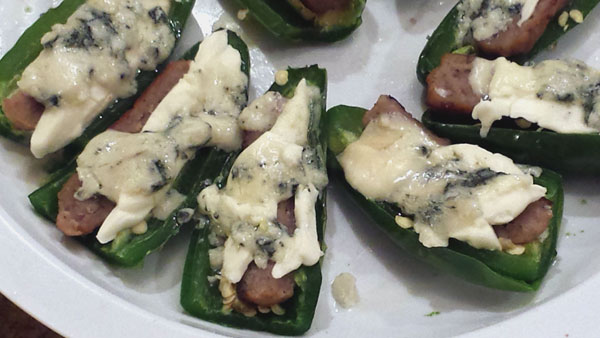
Where did Stuffed Jalapenos come from?
The term Jalapeno Popper came about around 1972 in Texas from what I have read and if wrapped in bacon was referred to as an Armadillo Egg. No wonder that name never caught on! It is said that it is most likely Tex Mex remnant of the Chili Relleno.
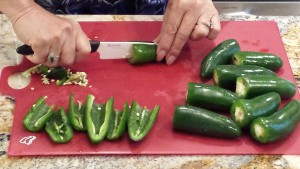 Jalapeno poppers came about by stuffing them with cheese, meat, spices or a combination thereof, and usually breaded and deep fried. It is akin to Chili Rellenos, those are stuffed as well, but only using Poblano peppers. Poblano peppers are not really hot, with just a tiny bit of heat that anyone could eat them.
Jalapeno poppers came about by stuffing them with cheese, meat, spices or a combination thereof, and usually breaded and deep fried. It is akin to Chili Rellenos, those are stuffed as well, but only using Poblano peppers. Poblano peppers are not really hot, with just a tiny bit of heat that anyone could eat them.
Jalapeno poppers are tasty morsels of spice and chomp. However, with a lot of us out there, we are painfully aware of healthier eating of the do’s and don’t s. Not saying that every now and then we cheat and do those ‘don’t s.’ Because they are so yummy.
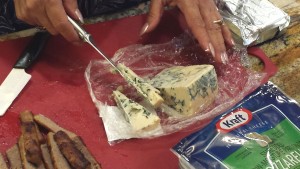 There is another alternative to the breading and the frying. Yes, there is a God Mother of Cooking. You can take these jalapenos, make sure to get the largest, fattest ones there are and stuff to your hearts content without breading or frying. There are several easy, quick and really tasty dishes to be made from jalapenos that you and your guests would love, if they like a bit of spicy.
There is another alternative to the breading and the frying. Yes, there is a God Mother of Cooking. You can take these jalapenos, make sure to get the largest, fattest ones there are and stuff to your hearts content without breading or frying. There are several easy, quick and really tasty dishes to be made from jalapenos that you and your guests would love, if they like a bit of spicy.
This appetizer or treat or snack can be made in a few minutes, depending upon how many you are making. Nevertheless, there are several recipes to choose from and are a great way to serve on a minutes notice, or unexpected guests or even a late night snack. And the best part about this dish is it doesn’t have to be “off” the diet, meaning, there are no carbohydrates from direct sugar or starches. There is an added plus to this dish, being a hot pepper, it has the thermogenic effects to your body that could help to burn calories, what a helpful food!
Usually, our bodies expend more energy, burning calories to process (digesting) proteins than fats or carbohydrates. So that would mean that you process, or rather burn about a third of the calories in lean protein of what you have just eaten! Pretty cool, how the thermogenic effect works. Who doesn’t like to eat? OK, now, about the carbs…they take some energy to burn, about half of that of protein and fats are easily processed and has a very low thermogenic effect.
Most any food has carbohydrates, but most people tend to think “carbs”, such as sugar, potatoes, noodles, rice, any starchy foods and they would be right. But there are good carbs, such as vegetables, grains and milk-dairy products. Carbohydrates are macronutrients. What are macronutrients you ask? I’m glad you did. Macros are types of food that our bodies require. They consists of proteins, fats, carbohydrates. It is also referred to as the chemical compounds found, such as magnesium, potassium, calcium that all living things need, not just in humans but in plant life as well to be healthy.
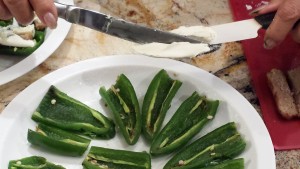 Now let us explore the micronutrient, it is the trace minerals/trace elements or vitamins found in such foods that are also essential to good health and development for our bodies. But remember, it has a name ”micro’, due to the small or minute amounts in them and is required for our bodies.
Now let us explore the micronutrient, it is the trace minerals/trace elements or vitamins found in such foods that are also essential to good health and development for our bodies. But remember, it has a name ”micro’, due to the small or minute amounts in them and is required for our bodies.
Our bodies need energy and is obtained through our foods we eat. Carbohydrates (good or the bad) is our body’s main source of energy. Like feeding a fire, we need to eat to maintain our energy, out mind’s thought process and health. Do we live to eat, or eat to live? These carbohydrates gives us the oxygen, hydrogen and it has carbon, which we as in earthbound beings are carbon based and our bodies need this in a cellular level to function. Our bodies are pretty smart if we only listen to it!
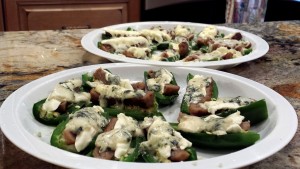 Just for note, your body does not produce macronutrients of it’s own, we need to consume these carbohydrates, proteins and fats to obtain and maintain life.
Just for note, your body does not produce macronutrients of it’s own, we need to consume these carbohydrates, proteins and fats to obtain and maintain life.
Jalapenos are fun to make, great to chomp on and can give you a kick! Not to mention endorphins, but that is another article!
Here is some food for thought! Stuffed jalapenos, pickled jalapenos, fried jalapenos, boiled, broiled, grilled, steamed, roasted, toasted, braised, smoked, dried, ground, chopped, mushed, mashed, dehydrated just to name a few. Hope this was fun to read and tickles your tongue to make some!

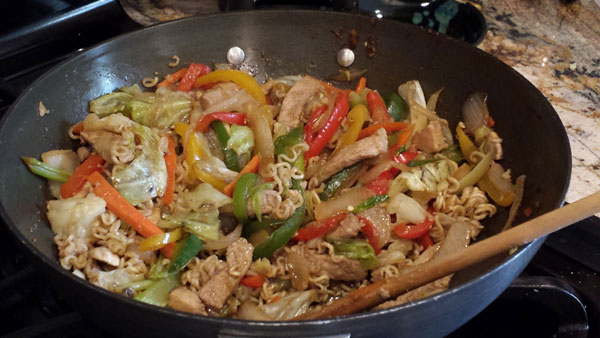
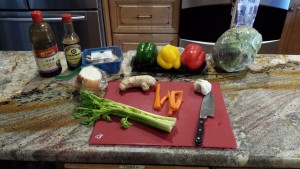 This is a funny and subjective question isn’t it? It is what it states — ‘stir fry’. Stir fry what? Stir fry anything! Stir fry really is a technique. But most of us use the word
This is a funny and subjective question isn’t it? It is what it states — ‘stir fry’. Stir fry what? Stir fry anything! Stir fry really is a technique. But most of us use the word 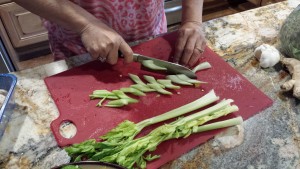 So let’s get down to business of the stir fry. Most people think stir fry is like a goulash-throw everything into a fry pan or wok, I would say they might be partly right… but so not right! It is the semantics or the interpretation of the cooking and not so much its ingredients. With that said…
So let’s get down to business of the stir fry. Most people think stir fry is like a goulash-throw everything into a fry pan or wok, I would say they might be partly right… but so not right! It is the semantics or the interpretation of the cooking and not so much its ingredients. With that said…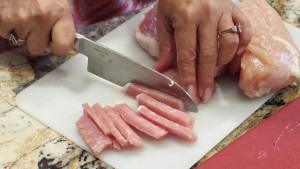 Stir fry is a description of how it is cooked, the technique, however, for the ingredients, there is a method to stir fry.
Stir fry is a description of how it is cooked, the technique, however, for the ingredients, there is a method to stir fry.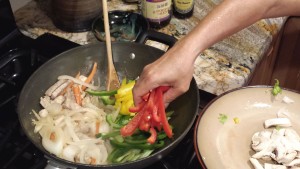 otherwise. OK, but you have a freezer don’t you? So fresh is not out of the question compared to canned. Next, you don’t have time to cut or chop the veggies or meat, that is an excuse! If you are making a meal once, why not cut or chop extra so that it can be frozen and utilized another day? Yes, you come home, don’t have “time” to prep and cook, ah, but you have the extra bag(s) of “stir fry” in the freezer! Take it out, thaw a bit and then “viola” into the wok and you’re done! It is a quick, easy and healthy meal. Now don’t get me wrong, the taste you can change up, the flavor of the sauce or viscosity can be created to make a different dish!
otherwise. OK, but you have a freezer don’t you? So fresh is not out of the question compared to canned. Next, you don’t have time to cut or chop the veggies or meat, that is an excuse! If you are making a meal once, why not cut or chop extra so that it can be frozen and utilized another day? Yes, you come home, don’t have “time” to prep and cook, ah, but you have the extra bag(s) of “stir fry” in the freezer! Take it out, thaw a bit and then “viola” into the wok and you’re done! It is a quick, easy and healthy meal. Now don’t get me wrong, the taste you can change up, the flavor of the sauce or viscosity can be created to make a different dish! 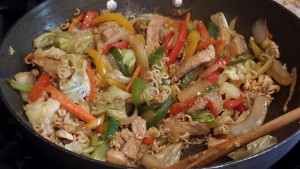 Eating is this fashion you’ll find you become healthier, even loose weight and feel great! What more can cooking do for you? We eat because we’re hungry, happy, sad or depressed. But if we are conscientious of what we eat, then that’s half the battle to longevity, health and happiness. Isn’t cooking and eating grand!
Eating is this fashion you’ll find you become healthier, even loose weight and feel great! What more can cooking do for you? We eat because we’re hungry, happy, sad or depressed. But if we are conscientious of what we eat, then that’s half the battle to longevity, health and happiness. Isn’t cooking and eating grand! 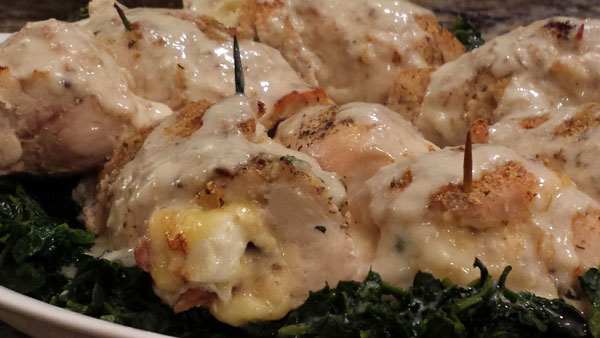
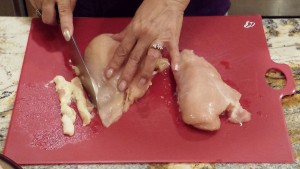 Where did the name Cordon Bleu come from? Cordon Bleu in French translation means “blue ribbon”, which originally was worn by the highest order of the Knighthood in the 1500’s, but hence forth, this terms refers to foods prepared to a very high standard and to award the exemplary chefs and cooks. Think of it as a cord of blue, a blue ribbon as prized awards given.
Where did the name Cordon Bleu come from? Cordon Bleu in French translation means “blue ribbon”, which originally was worn by the highest order of the Knighthood in the 1500’s, but hence forth, this terms refers to foods prepared to a very high standard and to award the exemplary chefs and cooks. Think of it as a cord of blue, a blue ribbon as prized awards given.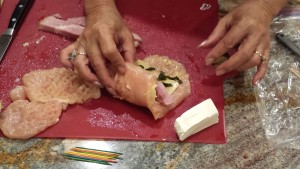 Cordon bleu can be made with veal, ham, chicken traditionally, however, you can make your own cordon bleu. Usually the veal, or chicken is pounded by a mallet to thin and widen, then a slice of ham and cheese is rolled inside-known as a roulade, a roll. Then it is breaded and fried or baked. With a ham cordon bleu it is stuffed with mushrooms and cheese. So as you see, it can have many variations in itself.
Cordon bleu can be made with veal, ham, chicken traditionally, however, you can make your own cordon bleu. Usually the veal, or chicken is pounded by a mallet to thin and widen, then a slice of ham and cheese is rolled inside-known as a roulade, a roll. Then it is breaded and fried or baked. With a ham cordon bleu it is stuffed with mushrooms and cheese. So as you see, it can have many variations in itself.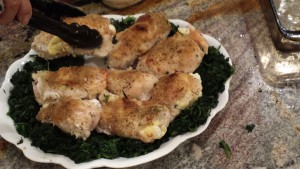 Chicken cordon bleu is a dish most everyone knows about or has heard of it, however, not necessarily eaten. Why you might ask? Perhaps they never went to a restaurant that served it, or didn’t know what it was, or afraid to make it at home. Don’t let the name ‘Chicken Cordon Bleu’ intimidate you! It is a fancy name, it is a fancy dish, but you can make it.
Chicken cordon bleu is a dish most everyone knows about or has heard of it, however, not necessarily eaten. Why you might ask? Perhaps they never went to a restaurant that served it, or didn’t know what it was, or afraid to make it at home. Don’t let the name ‘Chicken Cordon Bleu’ intimidate you! It is a fancy name, it is a fancy dish, but you can make it.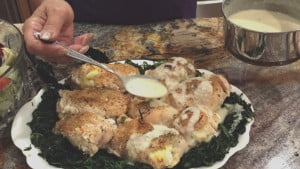 Okay, so now that you know basically it is a meat roll with cheese, it doesn’t seem so intimidating does it?
Okay, so now that you know basically it is a meat roll with cheese, it doesn’t seem so intimidating does it?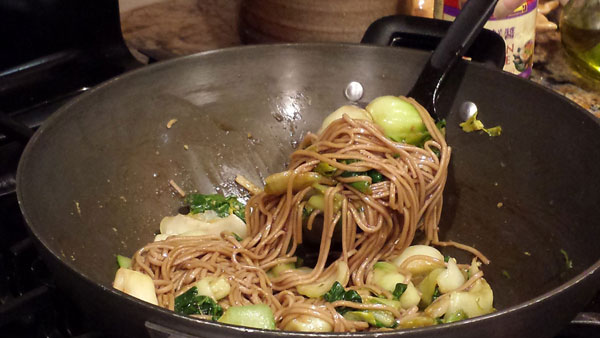
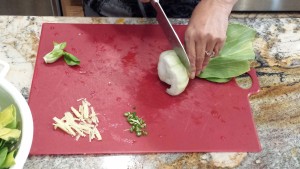 Some of you are aware of and have eaten Bok choy or sometimes called Pak choy or baby choy. But did you know that these cruciferous vegetables are a member of the cabbage family? And that they really pack a punch when it comes to your nutrition and health? These nutrients and phytonutrients kick up your energy and fights off toxins. These little veggies are ranked one of the highest nutritional vegetables due to the amount of 21 nutrients and this includes omega-3s and zinc, which is a mineral that has antioxidant properties. This Bok choy has not only antioxidant benefits, but also anti-inflammatory benefits, and is low on the Glycemic Index (GI).
Some of you are aware of and have eaten Bok choy or sometimes called Pak choy or baby choy. But did you know that these cruciferous vegetables are a member of the cabbage family? And that they really pack a punch when it comes to your nutrition and health? These nutrients and phytonutrients kick up your energy and fights off toxins. These little veggies are ranked one of the highest nutritional vegetables due to the amount of 21 nutrients and this includes omega-3s and zinc, which is a mineral that has antioxidant properties. This Bok choy has not only antioxidant benefits, but also anti-inflammatory benefits, and is low on the Glycemic Index (GI).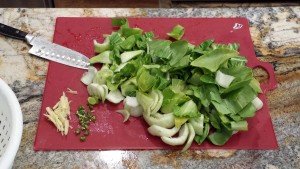 Bok choy’s antioxidants help to fight off free radicals in our bodies and there are studies regarding antioxidants and caner prevention. Everyone knows that it is said that broccoli, kale, cauliflower, cabbages and other vegetables promote healthy bodies and good in nutrition. There are studies that bok choy provides lutein and over 70 antioxidant phenolic substances as well as being one of the higher vitamin A vegetables. Pretty good punch for a little veggie!
Bok choy’s antioxidants help to fight off free radicals in our bodies and there are studies regarding antioxidants and caner prevention. Everyone knows that it is said that broccoli, kale, cauliflower, cabbages and other vegetables promote healthy bodies and good in nutrition. There are studies that bok choy provides lutein and over 70 antioxidant phenolic substances as well as being one of the higher vitamin A vegetables. Pretty good punch for a little veggie!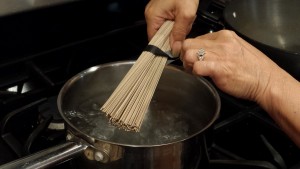 You can find bok choy at any Asian store or sometimes at the local grocery store, you could always ask the manager. Bok choy is easy to spot, it has a bulb at the bottom with stem type stalk with rounded leaves. Kind of looks similar to the Fennel bulb, without the skinny stalk top part being fuzzy leafed.
You can find bok choy at any Asian store or sometimes at the local grocery store, you could always ask the manager. Bok choy is easy to spot, it has a bulb at the bottom with stem type stalk with rounded leaves. Kind of looks similar to the Fennel bulb, without the skinny stalk top part being fuzzy leafed.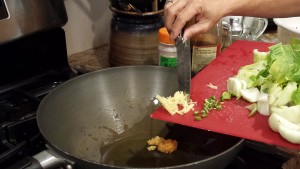 Bok choy, is a joy! It only take a few minutes to cook and so good for you. This vegetable is so versatile, you can serve it as a main dish is you are vegetarian or vegan or utilize it as a side dish with a multitude of variations or versions to keep up the romance with this vegetable.
Bok choy, is a joy! It only take a few minutes to cook and so good for you. This vegetable is so versatile, you can serve it as a main dish is you are vegetarian or vegan or utilize it as a side dish with a multitude of variations or versions to keep up the romance with this vegetable.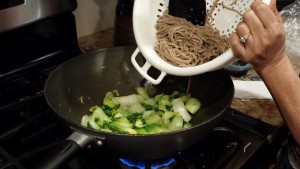 Bok choy can be served with various flavoring such as: garlic, ginger, salt, pepper, shoyu sauce, fish sauce, Hoisin sauce, Oyster sauce, vinegar, with or without a bit of sugar, miso and so much more.
Bok choy can be served with various flavoring such as: garlic, ginger, salt, pepper, shoyu sauce, fish sauce, Hoisin sauce, Oyster sauce, vinegar, with or without a bit of sugar, miso and so much more.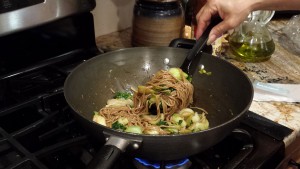 Since I love this little munchkin, I quickly saute it with some garlic and sometimes ginger, shoyu sauce and Hoisin or Oyster sauce…that’s it. A quick toss in the wok or large pan and ready to eat! Only takes about 3 to 5 minutes to cook, before that 5 minutes to wash and prep/cut…so less than 10 minutes! My rice takes longer to cook! Speaking of rice, bok choy can be served as a side dish with meat, seafood or any other vegetable and can be incorporated with noodles as well soup.
Since I love this little munchkin, I quickly saute it with some garlic and sometimes ginger, shoyu sauce and Hoisin or Oyster sauce…that’s it. A quick toss in the wok or large pan and ready to eat! Only takes about 3 to 5 minutes to cook, before that 5 minutes to wash and prep/cut…so less than 10 minutes! My rice takes longer to cook! Speaking of rice, bok choy can be served as a side dish with meat, seafood or any other vegetable and can be incorporated with noodles as well soup.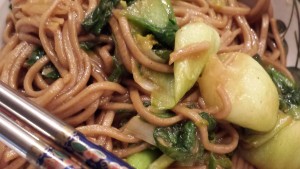 Here are some other greens and names you might see at the Asian store:
Here are some other greens and names you might see at the Asian store: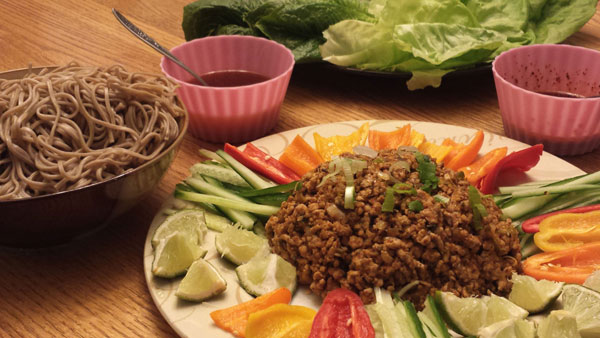
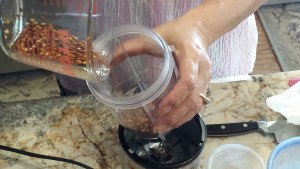 You can eat this with rice, noodles, or wrap it up in lettuce, cabbage or put it in spring rolls. So many options to eat with. One of my favorite is having a small gathering, and set the serving table and let your guests make their own wraps. Kind of the Asian version of making your own tacos. The plethora of a smorgasbord in your mouth!
You can eat this with rice, noodles, or wrap it up in lettuce, cabbage or put it in spring rolls. So many options to eat with. One of my favorite is having a small gathering, and set the serving table and let your guests make their own wraps. Kind of the Asian version of making your own tacos. The plethora of a smorgasbord in your mouth!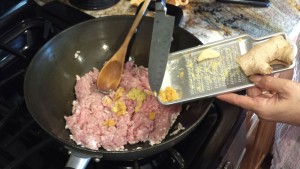 If you like it hot and spicy, you can make this as hot and spicy as you want. If you like a milder, toned down version, easily accomplished. If you don’t want meat, no problem, you make the wraps as you want.
If you like it hot and spicy, you can make this as hot and spicy as you want. If you like a milder, toned down version, easily accomplished. If you don’t want meat, no problem, you make the wraps as you want.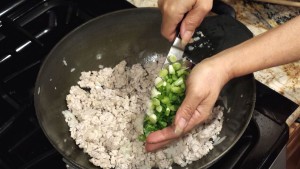 Envision this on your table:
Envision this on your table: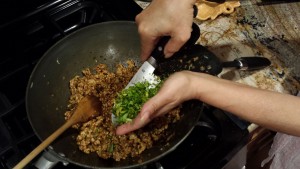 Then off to the left is a huge bowl or platter with lettuce leaves, such as romaine, bib lettuce, cabbage leaves. In the front of these 4 offering are the various sides of colorful vegetable dishes smiling at you. Then you look in front of all this you see all the seasoned sauces, yes there three of them. One is the salty, vinegary hot spicy fresh hot pepper sauce, then the regular red spicy sauce and wait there’s one more…this is a sweet chili sauce with just a bite of spicy. Are you hungry yet? I am!
Then off to the left is a huge bowl or platter with lettuce leaves, such as romaine, bib lettuce, cabbage leaves. In the front of these 4 offering are the various sides of colorful vegetable dishes smiling at you. Then you look in front of all this you see all the seasoned sauces, yes there three of them. One is the salty, vinegary hot spicy fresh hot pepper sauce, then the regular red spicy sauce and wait there’s one more…this is a sweet chili sauce with just a bite of spicy. Are you hungry yet? I am!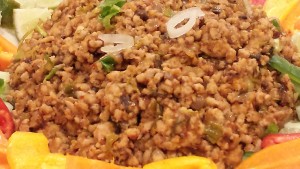 Most people think it is Thai, however, it originated in Laos. Thailand has their own version of Larb. Several Asian countries share this dish. Here are some example of how it may be spelled, Laab, Larb, Lap, Laap, Larp, Lahb depending upon what country it may be. Laab is a minced/ground meat dish, considered a salad and the national dish of Laos. Thailand is also known for this dish due to the influx of people from Laos and of Laotian decent in Thailand. Most always Thai restaurants serve this dish, not many Laotian restaurants around to check out.
Most people think it is Thai, however, it originated in Laos. Thailand has their own version of Larb. Several Asian countries share this dish. Here are some example of how it may be spelled, Laab, Larb, Lap, Laap, Larp, Lahb depending upon what country it may be. Laab is a minced/ground meat dish, considered a salad and the national dish of Laos. Thailand is also known for this dish due to the influx of people from Laos and of Laotian decent in Thailand. Most always Thai restaurants serve this dish, not many Laotian restaurants around to check out.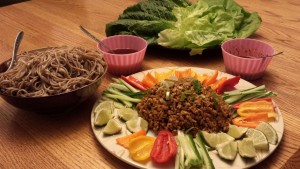 Laab is so tasty, it can be made from various meats, such as pork, chicken, turkey, beef, duck, veal, seafood/fish or vegetarian with mushrooms. I have an alternative for meat in this dish that any vegan can enjoy.
Laab is so tasty, it can be made from various meats, such as pork, chicken, turkey, beef, duck, veal, seafood/fish or vegetarian with mushrooms. I have an alternative for meat in this dish that any vegan can enjoy.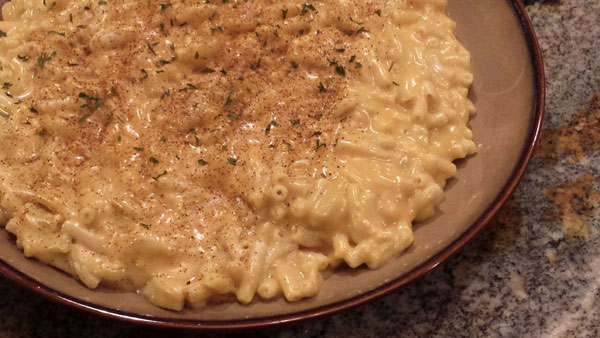
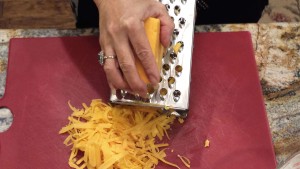 We owe a depth of gratitude, and appetite to Marie Antoine Careme and Georges Auguste Escoffier to being the ‘Father’ of the five (5) Mother Sauces that are used in everyday cooking around the world.
We owe a depth of gratitude, and appetite to Marie Antoine Careme and Georges Auguste Escoffier to being the ‘Father’ of the five (5) Mother Sauces that are used in everyday cooking around the world.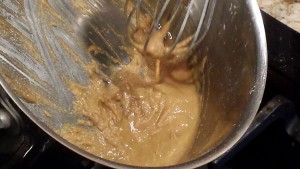 In France there are five revered sauces, called ‘mother sauces’ and Bechemal is the first and Mornay being the second with cheese added to the white Bechamel sauce. Thereafter follows the Veloute Roux with most often chicken, vegetable or fish stock (white) and (brown-from beef or veal). There’s Espangnole, a roux with brown broth/stock; then the Tomato red, which is roux and tomato. And last but not least and my favorite is the Hollandaise, which is made with clarified butter, egg yolks and lemon or white wine. Mm-mmm, yum. Of course, we can’t forget the Bearnaise, it’s an off shoot of the Hollandaise, with added herbs.
In France there are five revered sauces, called ‘mother sauces’ and Bechemal is the first and Mornay being the second with cheese added to the white Bechamel sauce. Thereafter follows the Veloute Roux with most often chicken, vegetable or fish stock (white) and (brown-from beef or veal). There’s Espangnole, a roux with brown broth/stock; then the Tomato red, which is roux and tomato. And last but not least and my favorite is the Hollandaise, which is made with clarified butter, egg yolks and lemon or white wine. Mm-mmm, yum. Of course, we can’t forget the Bearnaise, it’s an off shoot of the Hollandaise, with added herbs.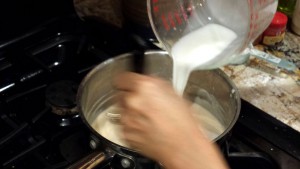 French cooking in general does have a lot of calories. Yes, with all the yummy sauces, there is no doubt; however, it doesn’t mean that we can’t eat it occasionally. But when you do, isn’t it nice to know and appreciate whence it came and what you can do with it.
French cooking in general does have a lot of calories. Yes, with all the yummy sauces, there is no doubt; however, it doesn’t mean that we can’t eat it occasionally. But when you do, isn’t it nice to know and appreciate whence it came and what you can do with it.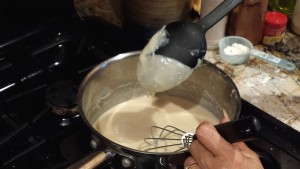 Just to clarify. Excuse the pun… with clarified butter there are three ways to make a gravy. One is making a roux then adding your liquid to thin to desired viscosity, or a reduction which is made from a liquid and cooked down to desired thickness, such a a glaze and the emulsification method. This method is utilized with the Hollandaise sauce. When two ingredients such as butter and lemon are mixed together, that are polar opposites – they really don’t adhere or mix well with each other, thus the imperative egg yolk comes into play. The egg yolk becomes a binding (catalyst) agent to combine these ingredients together making a delicious smooth sauce. Hollandaise is the only mother sauce that is emulsified, the other four use roux.
Just to clarify. Excuse the pun… with clarified butter there are three ways to make a gravy. One is making a roux then adding your liquid to thin to desired viscosity, or a reduction which is made from a liquid and cooked down to desired thickness, such a a glaze and the emulsification method. This method is utilized with the Hollandaise sauce. When two ingredients such as butter and lemon are mixed together, that are polar opposites – they really don’t adhere or mix well with each other, thus the imperative egg yolk comes into play. The egg yolk becomes a binding (catalyst) agent to combine these ingredients together making a delicious smooth sauce. Hollandaise is the only mother sauce that is emulsified, the other four use roux.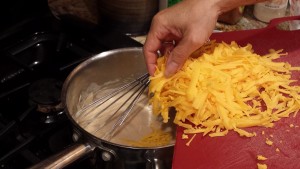 Let’s get started with the many ways that a roux can be used. The Bechamel can be used in so many ways, such as sausage and gravy on biscuits. Or perhaps a topping on a casserole, such as Moussaka. Then there is always the Mornay, in which cheese is added to the bechamel and there you have it, a gooey, thick macaroni and cheese dish or addition to a souffle. You can added whatever ingredients you want or need to make it your own. Take mushrooms for example, or perhaps onions or even leeks. You can add mustard, soy sauce, Worcestershire sauce or hot sauce, or a number of other ingredients to flush it out. Also, don’t forget your seasonings, herbs and spices to tickle your tongue and please the palate!
Let’s get started with the many ways that a roux can be used. The Bechamel can be used in so many ways, such as sausage and gravy on biscuits. Or perhaps a topping on a casserole, such as Moussaka. Then there is always the Mornay, in which cheese is added to the bechamel and there you have it, a gooey, thick macaroni and cheese dish or addition to a souffle. You can added whatever ingredients you want or need to make it your own. Take mushrooms for example, or perhaps onions or even leeks. You can add mustard, soy sauce, Worcestershire sauce or hot sauce, or a number of other ingredients to flush it out. Also, don’t forget your seasonings, herbs and spices to tickle your tongue and please the palate!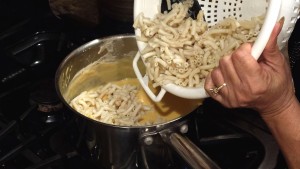 Basically bechamel is made by equal parts of butter and flour to make your roux, then the addition of your liquid, such as milk or cream to desired thick or thinness, with flavorings of choice. Mornay has the beloved cheese added. It seems easy and it is, but you must be ever so careful not to burn the roux, or you’ll need to start over. Square one is no fun, wasteful and time consuming.
Basically bechamel is made by equal parts of butter and flour to make your roux, then the addition of your liquid, such as milk or cream to desired thick or thinness, with flavorings of choice. Mornay has the beloved cheese added. It seems easy and it is, but you must be ever so careful not to burn the roux, or you’ll need to start over. Square one is no fun, wasteful and time consuming.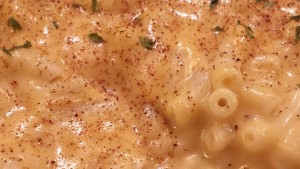 Bechamel and Mornay can be used with or poured over a multitude of dishes, such as asparagus, cauliflower, lasagna, middle eastern dishes as well as croquettes and so many other foods. I could go on and on, but I’ll start to get hungry. What is that saying… don’t shop when you’re hungry. Now I’m going to say don’t write when you’re hungry, or you’ll write on and on. So I will close by saying experiment and have fun eating.
Bechamel and Mornay can be used with or poured over a multitude of dishes, such as asparagus, cauliflower, lasagna, middle eastern dishes as well as croquettes and so many other foods. I could go on and on, but I’ll start to get hungry. What is that saying… don’t shop when you’re hungry. Now I’m going to say don’t write when you’re hungry, or you’ll write on and on. So I will close by saying experiment and have fun eating.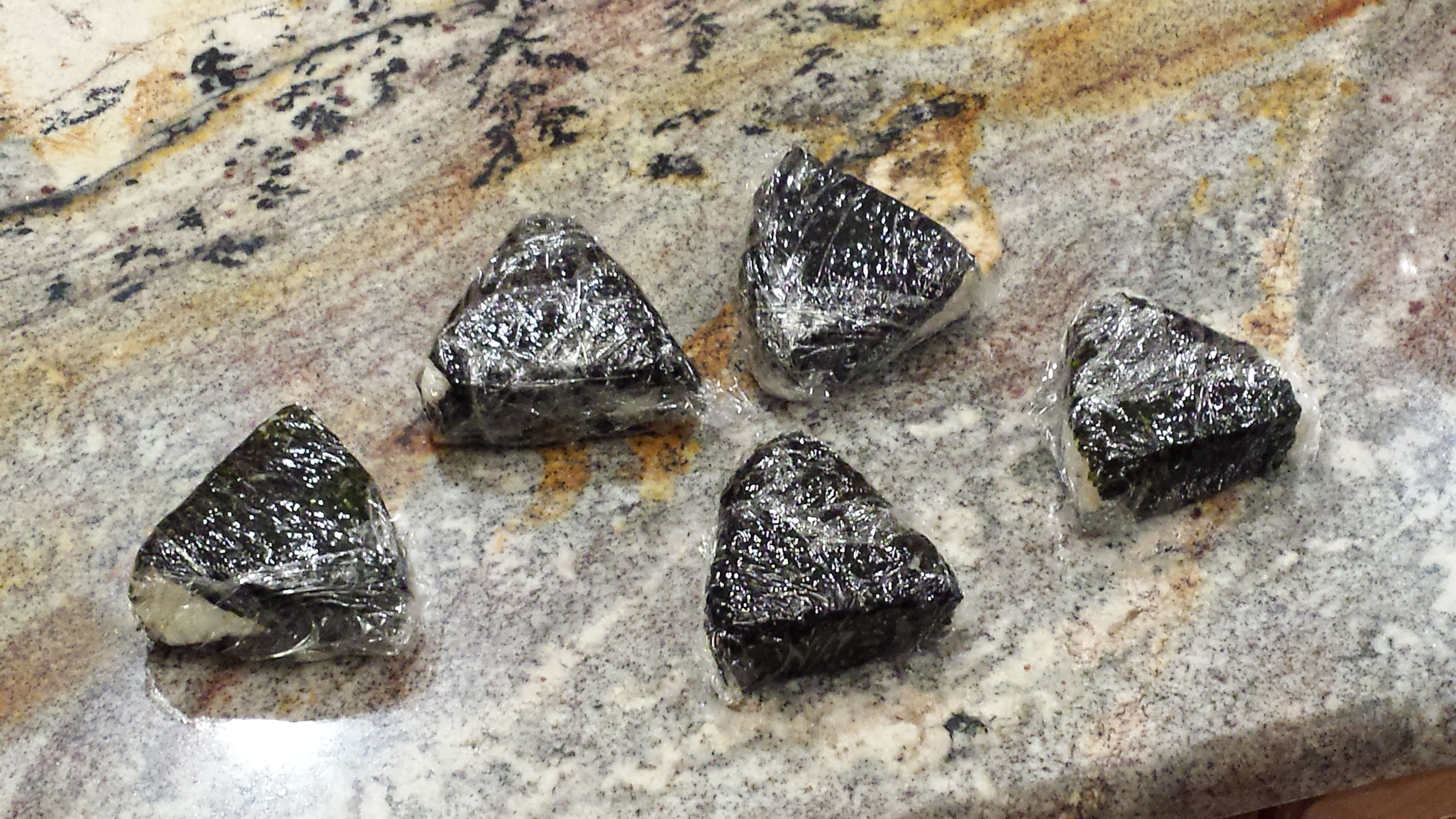
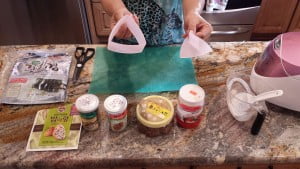 Onigiri is a very popular comfort food in Japan. It is a Japanese ‘rice ball’. Eaten for breakfast, lunch, and even dinner. Easy to make and handy when traveling, since it needs no refrigeration. Bento (lunch box) is a ‘takeout’ or home packed meal (lunch or dinner), and traditionally has rice, pickled or cooked vegetables and fish or meat. They come in a rectangular or box shape disposable bamboo or plastic containers, unless you have and make your own meal.
Onigiri is a very popular comfort food in Japan. It is a Japanese ‘rice ball’. Eaten for breakfast, lunch, and even dinner. Easy to make and handy when traveling, since it needs no refrigeration. Bento (lunch box) is a ‘takeout’ or home packed meal (lunch or dinner), and traditionally has rice, pickled or cooked vegetables and fish or meat. They come in a rectangular or box shape disposable bamboo or plastic containers, unless you have and make your own meal.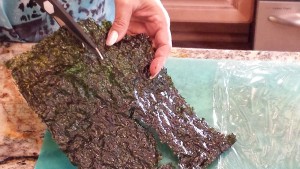 Onigiri or rice balls as they are sometimes called, is rice formed into a square, triangular, oval or round ball and may be stuffed with various ingredients. They can also be wrapped, covered or sprinkled with Nori (seaweed) and other seasonings, like Furikake. Some people refer to it as ‘sushi’, but it really is not, other than the fact it is made with plain steamed rice. Nigiri basically means rice that is formed into a shape and most sushi restaurants make ‘sushi’ with it. It has seasoned rice vinegar to make it a “sushi” rice, hence incorporated into the sushi family. Plain steamed rice is not sushi. Seasoned rice vinegar in rice is considered sushi rice. I hope this clears any confusion.
Onigiri or rice balls as they are sometimes called, is rice formed into a square, triangular, oval or round ball and may be stuffed with various ingredients. They can also be wrapped, covered or sprinkled with Nori (seaweed) and other seasonings, like Furikake. Some people refer to it as ‘sushi’, but it really is not, other than the fact it is made with plain steamed rice. Nigiri basically means rice that is formed into a shape and most sushi restaurants make ‘sushi’ with it. It has seasoned rice vinegar to make it a “sushi” rice, hence incorporated into the sushi family. Plain steamed rice is not sushi. Seasoned rice vinegar in rice is considered sushi rice. I hope this clears any confusion.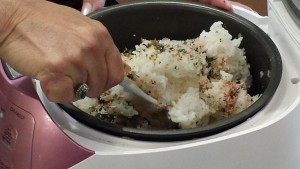 Some say that Onigiri is made with plain steamed rice, which would not be considered ‘sushi’.
Some say that Onigiri is made with plain steamed rice, which would not be considered ‘sushi’.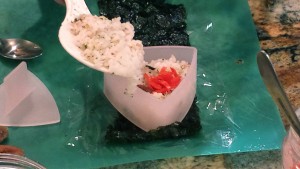 If you are traveling and want to make Onigi for your flight, car trip, bus trip, boating or event, you might want to stay with the salty and pickled ingredients. I have made Onigiri for long air flights. I made some for my Hawaii trip. Then another time a road trip from New York to Florida., and even for our boating/fishing day on the Gulf and the funniest of all was when I made some and took them to a football game! The good old days when you ‘could’ bring in food. Of course I shared some. People inquired ‘what is that?”. So I proceeded to tell them and shared some Onigiri. They liked it! I’ll take Onigiri over hot dogs any day! Although my husband likes hot dogs too.
If you are traveling and want to make Onigi for your flight, car trip, bus trip, boating or event, you might want to stay with the salty and pickled ingredients. I have made Onigiri for long air flights. I made some for my Hawaii trip. Then another time a road trip from New York to Florida., and even for our boating/fishing day on the Gulf and the funniest of all was when I made some and took them to a football game! The good old days when you ‘could’ bring in food. Of course I shared some. People inquired ‘what is that?”. So I proceeded to tell them and shared some Onigiri. They liked it! I’ll take Onigiri over hot dogs any day! Although my husband likes hot dogs too.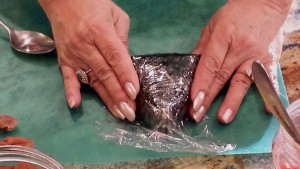 If you make plain steam rice, then it should be eaten right away within hours.
If you make plain steam rice, then it should be eaten right away within hours.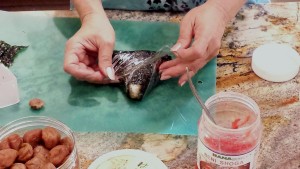 Non refrigerated filling Onigiri:
Non refrigerated filling Onigiri: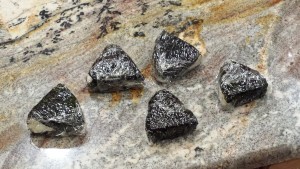 To be Eaten right away or will need refrigeration: Any chopped, diced, minced meat-poultry or fish fillings
To be Eaten right away or will need refrigeration: Any chopped, diced, minced meat-poultry or fish fillings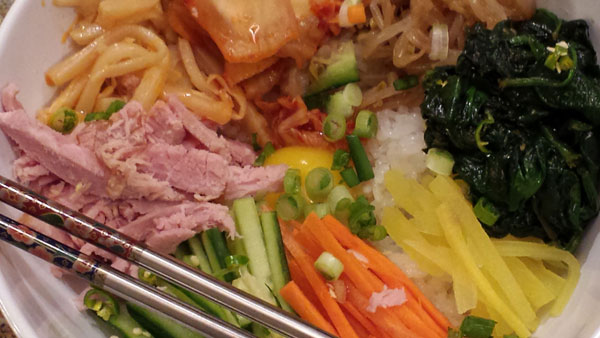
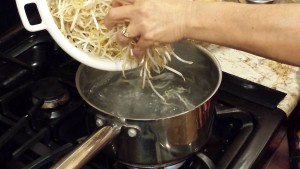 Traditionally sushi rice is used, however, Chirashi rice has a bit more vinegar mix into the rice compared to regular sushi rice used in making sushi maki (rolls) or nigiri (balls of rice with fish or other topping). Also, Chirashi rice can be used warm, unlike sushi rice making rolls or nigiri is cooled rice.
Traditionally sushi rice is used, however, Chirashi rice has a bit more vinegar mix into the rice compared to regular sushi rice used in making sushi maki (rolls) or nigiri (balls of rice with fish or other topping). Also, Chirashi rice can be used warm, unlike sushi rice making rolls or nigiri is cooled rice.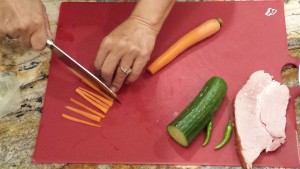 This is a healthy, quick and ultimately forever dish, What I mean is that the toppings are limitless! Cooked, raw, meat, fish, vegetables, etc. in any combination thereof. A very versatile dish for any occasion. It’s like taking a pair of jeans and dressing it up or down. You can make it as elaborate or as casual as you want by how many toppings, what kind of toppings and of course, having an array of colorful topping are very aesthetic to the eye and palate!
This is a healthy, quick and ultimately forever dish, What I mean is that the toppings are limitless! Cooked, raw, meat, fish, vegetables, etc. in any combination thereof. A very versatile dish for any occasion. It’s like taking a pair of jeans and dressing it up or down. You can make it as elaborate or as casual as you want by how many toppings, what kind of toppings and of course, having an array of colorful topping are very aesthetic to the eye and palate!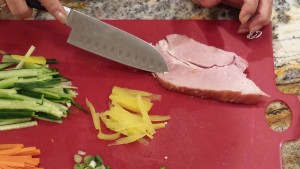 If you are going to use raw fish, make sure to go to a quality and knowledgeable fishmonger or seafood store or ask the seafood department at the supermarket if they carry “sushi” grade fish and how long ago it came in. Try to buy it when it comes in fresh! It is important that is sushi grade and can be eaten raw.
If you are going to use raw fish, make sure to go to a quality and knowledgeable fishmonger or seafood store or ask the seafood department at the supermarket if they carry “sushi” grade fish and how long ago it came in. Try to buy it when it comes in fresh! It is important that is sushi grade and can be eaten raw.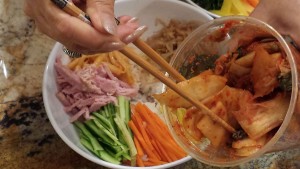 Just for note, people think “any” salmon can be eaten raw…NOT the case, only sushi grade ‘deep sea-salt salmon’ is for sushi, NOT fresh water salmon! Be aware of this. If uncertain ask the fishmonger.
Just for note, people think “any” salmon can be eaten raw…NOT the case, only sushi grade ‘deep sea-salt salmon’ is for sushi, NOT fresh water salmon! Be aware of this. If uncertain ask the fishmonger.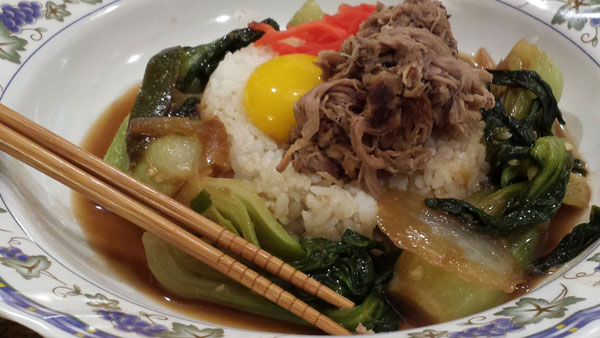
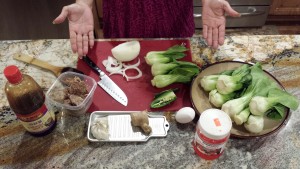 This is a very popular Korean dish and a signature dish in Korea. The word Bibimbap is translated to mixed rice. Not to be mistaken for fried rice. Bibimbap is similar to the Japanese dish called Chirashizushi. Bibimbap is a bowl of rice served with various vegetables, meats, fish and gochugang (Korean chili paste), soy sauce or doenjang (fermented soybean paste). Usually, beef is served on top with either a raw or cooked egg along with various namul vegetables. In Korea, ‘Namul” are seasoned and sauteed vegetables served as side dishes with rice.
This is a very popular Korean dish and a signature dish in Korea. The word Bibimbap is translated to mixed rice. Not to be mistaken for fried rice. Bibimbap is similar to the Japanese dish called Chirashizushi. Bibimbap is a bowl of rice served with various vegetables, meats, fish and gochugang (Korean chili paste), soy sauce or doenjang (fermented soybean paste). Usually, beef is served on top with either a raw or cooked egg along with various namul vegetables. In Korea, ‘Namul” are seasoned and sauteed vegetables served as side dishes with rice.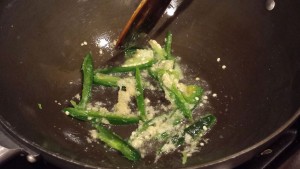 Similar to the Japanese Chirashizushi -rice bowl dish, the Koreans have different versions of the Bibimbap dishes too.
Similar to the Japanese Chirashizushi -rice bowl dish, the Koreans have different versions of the Bibimbap dishes too.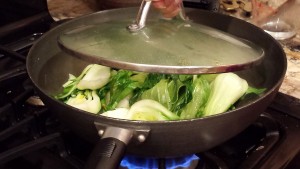 Yukhoe bibimbap is a Korean style steak tartare. It is raw fresh beef (filet mignon or a good lean cut of beef) and is usually seasoned and on top of rice, along with namul/vegetables. This is my favorite, next to Hoedeobap (raw fish).
Yukhoe bibimbap is a Korean style steak tartare. It is raw fresh beef (filet mignon or a good lean cut of beef) and is usually seasoned and on top of rice, along with namul/vegetables. This is my favorite, next to Hoedeobap (raw fish).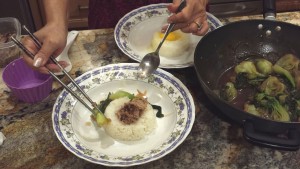 The bottom of the bowl is coated with sesame oil which crisps up the bottom of the rice that is placed in it. The bowl is so very hot it sizzles anything that goes in for a couple of minutes, mmm like fajitas, can you smell it yet? Usually a raw egg is placed against the side of the stone bowl and cooks the egg. The other vegetables (namul) is placed on top and round the rice.
The bottom of the bowl is coated with sesame oil which crisps up the bottom of the rice that is placed in it. The bowl is so very hot it sizzles anything that goes in for a couple of minutes, mmm like fajitas, can you smell it yet? Usually a raw egg is placed against the side of the stone bowl and cooks the egg. The other vegetables (namul) is placed on top and round the rice.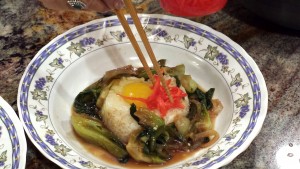 Any or all bibimbap can be served with gochugang (Korean chili paste), soy sauce or doenjang (fermented soybean paste) as a sauce for your bowl.
Any or all bibimbap can be served with gochugang (Korean chili paste), soy sauce or doenjang (fermented soybean paste) as a sauce for your bowl.
